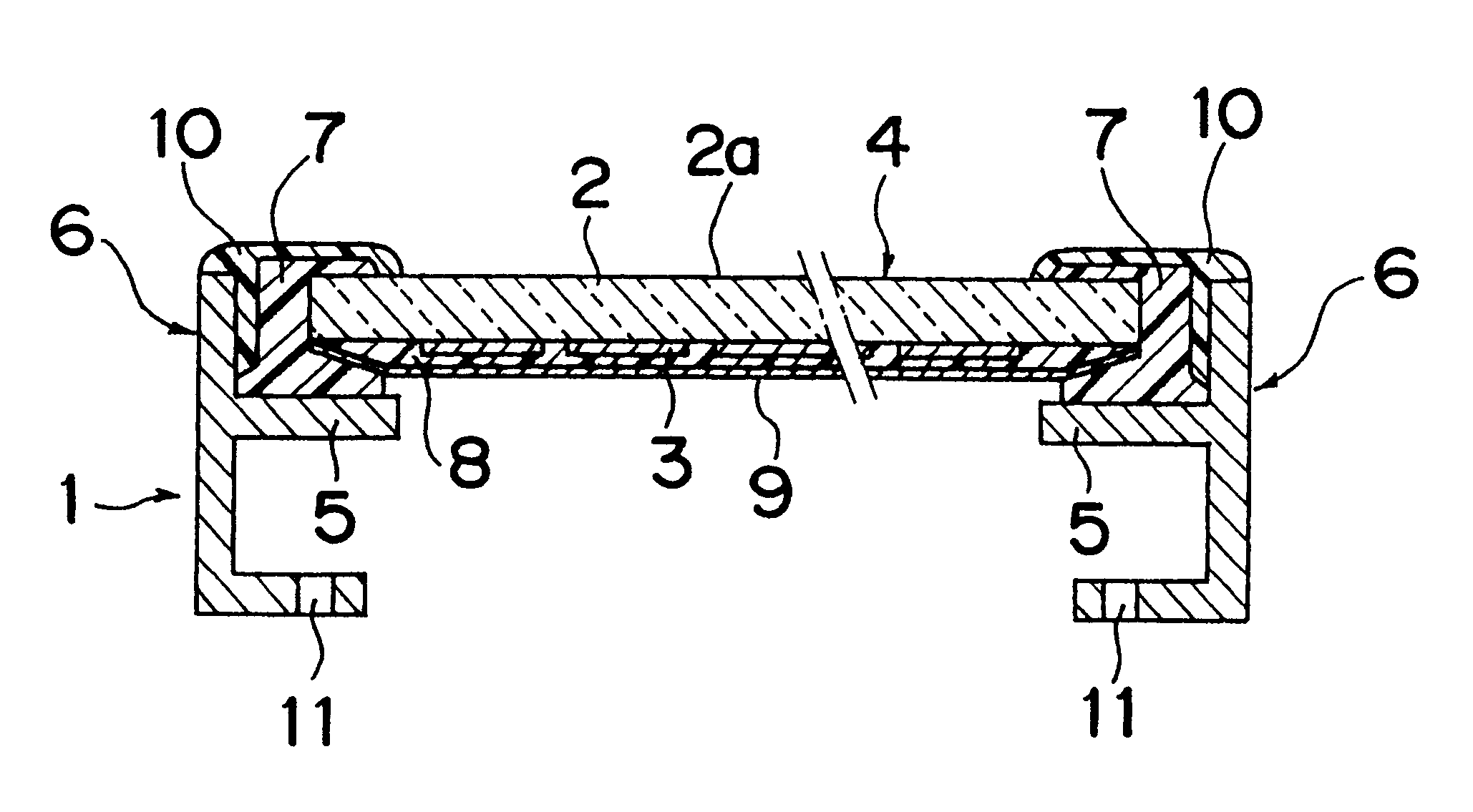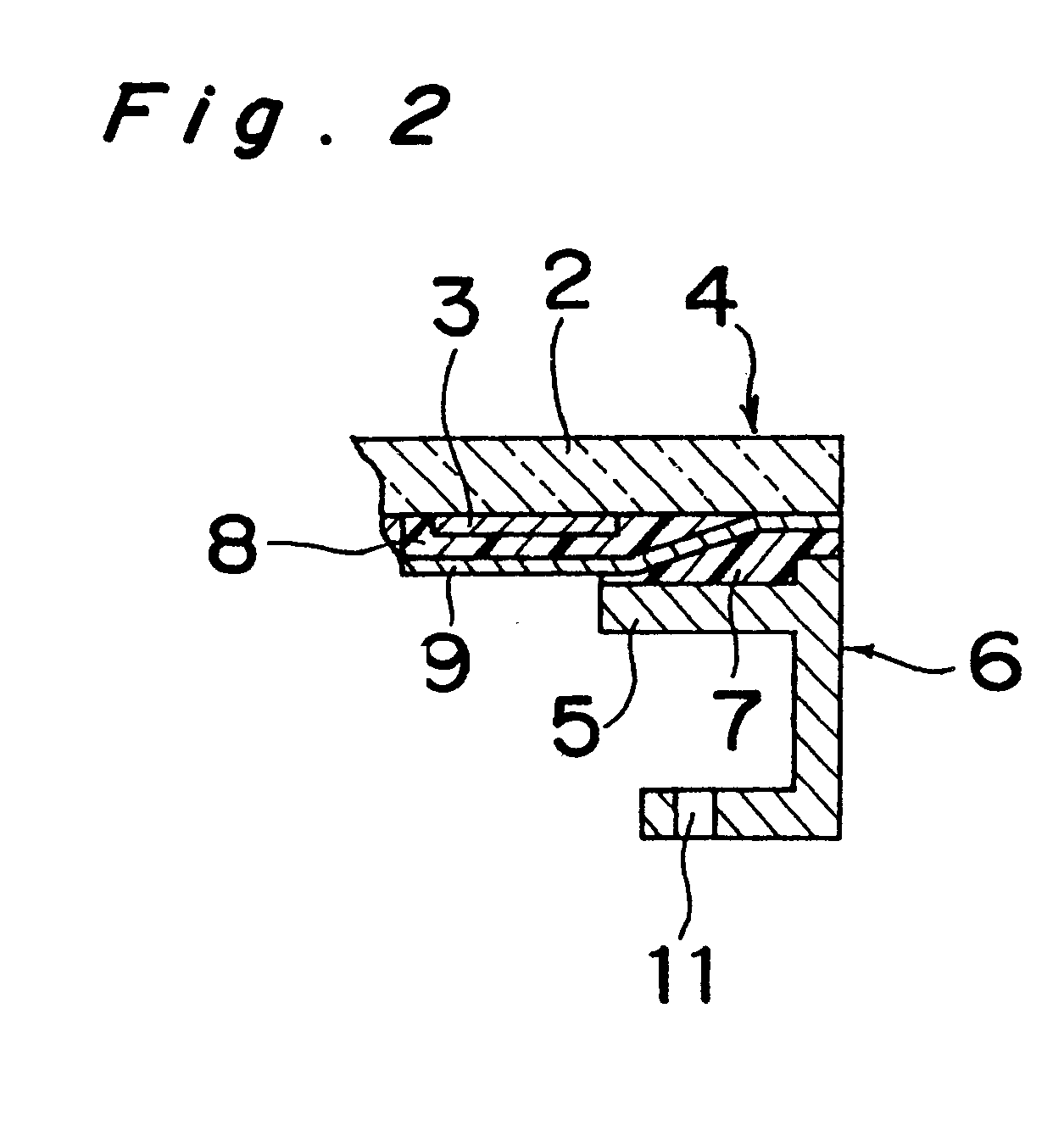Solar battery module and method for assembling the same
a solar battery and module technology, applied in the direction of photovoltaic supports, photovoltaic power plants, adhesive types, etc., can solve the problems of affecting the assembling process
- Summary
- Abstract
- Description
- Claims
- Application Information
AI Technical Summary
Problems solved by technology
Method used
Image
Examples
example 2
(1) Production of Polymer (A)
After 105 g of PPG (PML-4010) manufactured by Asahi Garasu Co., Ltd is heated to 80.degree. C., 3.7 g of isocyanate propylmethyldimethoxysilane [manufactured by Shinetsu Silicone Co., Ltd., KBM-9207] is added and the mixture was reacted for 24 hours to obtain a polymer (A).
(2) Preparation of Moisture Curing HMA
According to the same formulation and conditions as those described in Example 1 (2) except for using 100 g of the polymer (A) obtained in the above item (1), a moisture curing HMA is obtained.
example 3
(1) Production of Polymer (B)
n-butyl acrylate (0.5 mol), ethyl acrylate (50 g, 0.5 mol), .gamma.-methacryloxypropylmethyldimethoxysilane (3.49 g, 0.015 mol) and .gamma.-mercaptopropylmethyldimethoxysilane (0.72 g, 0.004 mol) are mixed. To the mixture, 0.3 g of .alpha.,.alpha.'-azobisisobutyronitrile (AIBN) and 60 g of dioctyl phthalate as the plasticizer are added, followed by mixing with stirring. A part (20 g) of this mixed solution is charged in a separable flask and slowly heated to 80.degree. C. under a nitrogen atmosphere. While confirming that the polymerization starts and the temperature rises after several minutes, stirring and heating are continued. After 10 minutes, the remaining mixed solution is slowly added dropwise using a dropping funnel to perform the reaction. After the completion of the dropwise addition, heating is continued for about 30 minutes. To the reaction solution, AIBN (0.1 g) is added, followed by heating with stirring for about 1 hour, thereby completin...
example 4
(1) Production of Polymer (B)
n-ethylhexyl acrylate (147.2 g, 0.8 mol), methyl methacrylate (20 g, 0.2 mol), .gamma.-methacryloxypropyltrimethoxysilane (4.98 g, 0.02 mol), .gamma.-mercaptopropyltrimethoxysilane (0.49 g, 0.0025 mol) and dioctyl phthalate (85 g) are mixed. To the mixture, AIBN (0.3 g) is added, followed by mixing with stirring. According to the same manner as that described in Example 3 (1), the copolymerization reaction was performed to obtain a copolymer (B). The resulting polymer (B) was a colorless transparent and viscous liquid, and its average molecular weight determined by GPC was 56000.
(2) Preparation of Moisture Curing HMA
According to the same formulation and conditions as those described in Example 3 (2) except for using 100 g of the polymer (B) obtained in the above item (1), a moisture curing HMA is obtained.
PUM
| Property | Measurement | Unit |
|---|---|---|
| temperature | aaaaa | aaaaa |
| melting point | aaaaa | aaaaa |
| temperature | aaaaa | aaaaa |
Abstract
Description
Claims
Application Information
 Login to View More
Login to View More - R&D
- Intellectual Property
- Life Sciences
- Materials
- Tech Scout
- Unparalleled Data Quality
- Higher Quality Content
- 60% Fewer Hallucinations
Browse by: Latest US Patents, China's latest patents, Technical Efficacy Thesaurus, Application Domain, Technology Topic, Popular Technical Reports.
© 2025 PatSnap. All rights reserved.Legal|Privacy policy|Modern Slavery Act Transparency Statement|Sitemap|About US| Contact US: help@patsnap.com



